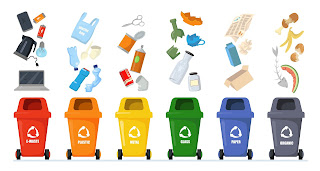Textile Waste Solutions: Rethinking Fashion’s Footprint
The fashion industry has long been admired for its creativity and constant reinvention—but beneath the glamorous surface lies a growing environmental crisis. Every year, millions of tons of textile waste end up in landfills or incinerators, releasing harmful chemicals, consuming valuable space, and contributing significantly to greenhouse gas emissions. As fast fashion accelerates and consumer habits evolve, the need for sustainable textile waste solutions has never been more urgent.
Understanding the Textile Waste Problem
Textile waste comes from various sources—manufacturing offcuts, defective products, unsold inventory, and post-consumer garments. According to the Ellen MacArthur Foundation, the equivalent of one garbage truck of textiles is landfilled or burned every second. And with synthetic fibers like polyester taking hundreds of years to decompose, this problem won’t disappear on its own.
This wasteful cycle doesn’t just harm the planet—it also represents a loss of valuable materials, energy, and labor. So what can be done?
1. Recycling and Fiber Recovery
One of the most direct textile waste solutions is recycling. This can be mechanical (where fabrics are shredded into fibers) or chemical (where materials like polyester are broken down and re-polymerized). Companies and researchers are investing in new technologies that can separate blends like cotton-poly, which were once impossible to recycle effectively.
Although textile recycling is still in its early stages compared to paper or plastic, innovation is catching up. From closed-loop recycling systems to textile-to-textile regeneration, the industry is slowly creating pathways to reintroduce fibers back into the production cycle.
2. Upcycling and Creative Reuse
Unlike recycling, upcycling doesn’t break down materials—it repurposes them into new, often higher-value products. Designers and brands are embracing upcycled fashion by transforming old garments, leftover fabric, or factory offcuts into trendy, one-of-a-kind pieces.
Upcycling can take place at both the consumer and industrial levels. Independent creatives are turning thrift store finds into fashion statements, while large-scale manufacturers are reimagining excess inventory into capsule collections. This approach not only reduces waste but also celebrates individuality and resourcefulness.
3. Take-Back and Resale Programs
Retailers are starting to take more responsibility for what happens to their products after they’re sold. Take-back programs invite customers to return unwanted clothing, which is then sorted for donation, resale, recycling, or upcycling.
Similarly, resale platforms are exploding in popularity. Brands are launching their own secondhand marketplaces or partnering with established platforms to give pre-loved items a second chance. This keeps clothing in use longer and reduces the demand for virgin materials.
4. Smart Design and Sustainable Materials
Solving textile waste starts long before clothes hit the shelf. Brands are increasingly adopting circular design principles—using fewer materials, designing for durability, and making garments easier to repair or recycle.
Choosing sustainable fabrics also plays a crucial role. Organic cotton, hemp, and recycled polyester all offer lower environmental footprints than traditional options. By designing with the full lifecycle in mind, manufacturers can prevent waste before it happens.
5. Corporate Accountability and Partnerships
Change at scale requires collaboration. Governments, brands, nonprofits, and consumers must work together to build better systems for managing textile waste. Policy interventions—such as Extended Producer Responsibility (EPR)—can also play a role by holding companies accountable for the end-of-life of their products.
A Smarter Way to Handle Branded Merchandise
Among the more overlooked sources of textile waste is branded merchandise—t-shirts from trade shows, hats from corporate events, and promotional apparel that often ends up unused or discarded. That’s where companies like SwagCycle come in. SwagCycle offers responsible, brand-safe solutions to upcycle, recycle, or donate excess branded goods. Instead of letting unused merch become waste, SwagCycle helps businesses find ethical and sustainable ways to extend their swag’s life cycle—diverting it from landfills and turning it into a force for good.




Comments
Post a Comment